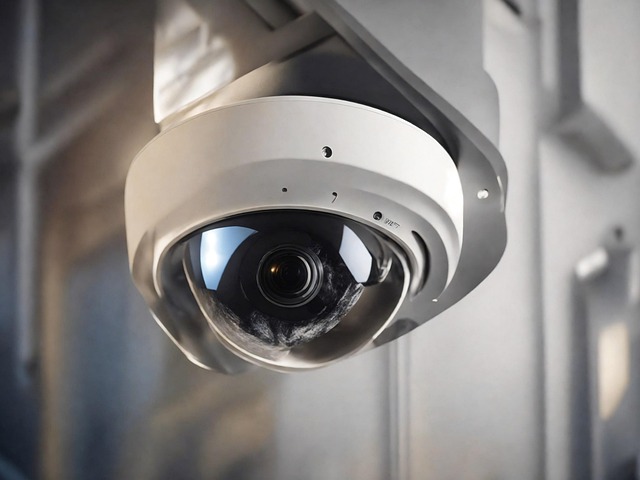Implementing commercial video surveillance requires a deep understanding of varied legal regulations worldwide, such as GDPR and CCPA, which mandate data protection, transparency in practices, and secure storage or disposal. Businesses must navigate complex rules regarding consent, data collection limits, and retention periods, varying by region. Staying current with regional laws, implementing robust security measures, and strategically placing cameras with advanced analytics ensure effective surveillance while respecting privacy, thereby fostering confidence and legal compliance.
In today’s digital age, commercial video surveillance has become a ubiquitous tool for businesses aiming to enhance security and protect assets. However, navigating the complex landscape of legal and privacy regulations is essential to avoid hefty fines and maintain public trust. This article explores critical aspects of compliance, offering insights into understanding and adhering to regulations governing commercial video surveillance. From data protection to staying abreast of evolving laws, discover best practices for implementing effective surveillance systems while upholding legal boundaries.
Understanding Legal and Privacy Regulations for Commercial Video Surveillance
Understanding legal and privacy regulations is paramount when implementing commercial video surveillance systems. Businesses must navigate a complex landscape of rules designed to protect individuals’ privacy while ensuring public safety. These regulations vary across regions, but common themes include requirements for obtaining consent, limiting data collection to what’s necessary, and securely storing or disposing of recorded information.
Commercial video surveillance operators need to be vigilant in complying with laws like GDPR in Europe or the California Consumer Privacy Act (CCPA) in the US. This involves clearly communicating surveillance practices to employees and visitors, implementing robust security measures to protect footage from unauthorized access, and ensuring video data is retained only as long as necessary for operational or legal purposes. Staying informed about evolving regulations is crucial to avoid legal repercussions and maintain public trust.
Key Considerations for Compliance: Data Protection and Security
In the realm of commercial video surveillance, data protection and security are paramount. As organizations collect and store vast amounts of visual data, ensuring compliance with privacy regulations is not just a legal necessity but also a strategic imperative. The key considerations here revolve around implementing robust security measures to safeguard sensitive information from unauthorized access or breaches.
This includes encrypting video feeds and stored footage, employing advanced access controls, and regularly updating software to patch vulnerabilities. Additionally, organizations must be transparent about data collection practices, providing clear notices and obtaining consent where required by law. Such proactive steps not only help maintain regulatory adherence but also build trust with customers and stakeholders, ensuring a secure digital environment for all.
Implementing Effective Surveillance Systems While Adhering to Legal Boundaries
Implementing effective surveillance systems in today’s digital era is essential for businesses aiming to enhance security while navigating legal boundaries. Commercial video surveillance has become a game-changer, offering robust protection against potential threats. However, it’s crucial to remember that with great power comes great responsibility—ensuring privacy and adhering to regulations like GDPR or local data protection laws.
Businesses must strike a delicate balance between monitoring activities and respecting individual privacy rights. This involves strategically placing cameras in public areas while avoiding zones that could invade personal spaces. Additionally, employing advanced analytics and AI for intelligent surveillance reduces false alarms and ensures efficient resource allocation. By doing so, organizations can create a safe environment without overstepping legal boundaries, thereby fostering a culture of security and compliance.
Staying Updated: The Evolving Landscape of Video Surveillance Laws and Best Practices
Staying current with the ever-evolving legal landscape surrounding video surveillance is paramount for businesses implementing or maintaining commercial video surveillance systems. Laws and regulations vary significantly from one region to another, necessitating a keen awareness of local requirements. For instance, laws pertaining to data retention periods, consent for installation, and access rights can differ vastly between jurisdictions. Staying informed about these changes ensures compliance with the law and protects against potential legal repercussions.
Best practices also evolve alongside legislative developments. Industry experts advocate for transparent surveillance policies, secure data storage, and robust protocols for accessing and sharing footage. Implementing these practices not only bolsters legal compliance but also enhances the overall effectiveness of commercial video surveillance systems in deterring crime and ensuring business continuity.
In the realm of commercial video surveillance, staying compliant with legal and privacy regulations is not just a best practice—it’s essential. By understanding the key considerations for data protection and security, implementing effective systems within legal boundaries, and staying updated on evolving laws and best practices, businesses can ensure their surveillance efforts are both ethical and legally sound. This proactive approach not only protects sensitive information but also fosters trust among customers, employees, and stakeholders.
